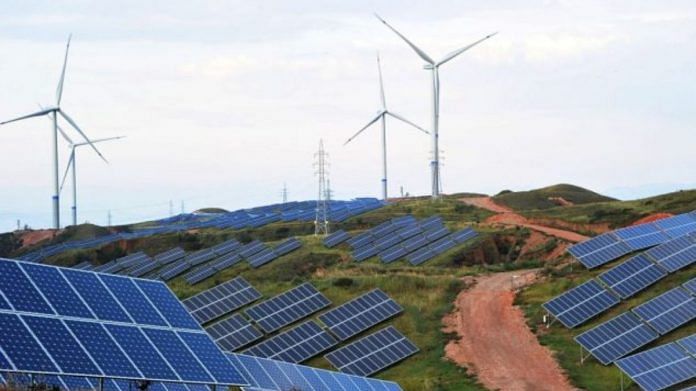How Wind Turbines Quietly Power Our Future
When people think of wind power, they often imagine huge blades spinning on tall towers in open fields. But modern wind turbines have come a long way. They are not just producing clean energy, they are doing it in a quieter, smarter, and more efficient way than ever before. Today, these machines are helping us move toward a future that is both sustainable and peaceful.
The Power of the Breeze
Wind turbines work by capturing the kinetic energy of moving air and turning it into electricity. Inside the turbine, a generator converts this mechanical movement into usable power. The process might sound simple, but it involves precise engineering and careful design to maximize efficiency.
A single 1 mw windmill can generate enough energy to power hundreds of homes for an entire year. Imagine the impact if thousands of these turbines were spread across a country. The results could dramatically reduce dependence on fossil fuels and cut harmful emissions.
Small Yet Powerful Options
While large turbines often make the headlines, smaller models are just as important. For example, a 5kw wind turbine can be installed on farms, small businesses, or even residential properties in windy regions. These smaller units provide energy independence and can help reduce electricity bills. They also serve as a backup during power outages, making them practical as well as eco-friendly.
Wind Farms: Energy Communities
A windmill farm is a group of turbines working together in one location. By connecting multiple turbines, these farms can generate massive amounts of electricity and feed it directly into the power grid. They are usually built in areas with consistent, strong winds—such as coastal regions, hilltops, or open plains.
Wind farms have an interesting community benefit as well. They often lease land from farmers or property owners, providing them with an additional source of income. The land can still be used for farming or grazing, so the turbines rarely disrupt existing land use.
Interesting Fact: Some modern wind farms are offshore, standing miles away from land in the open sea. Offshore winds are stronger and more consistent, which means turbines can generate more power without disturbing residential areas.
The Quiet Revolution
One common concern about wind turbines in the past was noise. Older models had loud mechanical sounds and blade vibrations. However, technology has improved significantly. Modern designs use advanced blade shapes, quieter gear systems, and better insulation to reduce sound levels. In fact, when you stand just a short distance away, the sound of the wind itself is often louder than the turbine.
This quiet operation is important not only for residential acceptance but also for wildlife. Quieter turbines help reduce disturbance to birds and animals living nearby, making them more environmentally friendly.
Environmental Advantages
Wind energy is renewable, which means it will never run out as long as the wind keeps blowing. Unlike coal or gas plants, wind turbines produce no air pollution or greenhouse gases while generating electricity. They also use very little water, unlike many traditional power plants that require large amounts for cooling.
Furthermore, the materials used to build turbines can often be recycled. Research is ongoing into making blades and other parts even more recyclable, ensuring that the environmental impact remains low throughout the turbine’s life cycle.
Challenges and Innovations
Of course, wind power is not without its challenges. The main issue is that wind is not constant; some days are calm and produce little energy. This is why many countries are investing in energy storage solutions like large batteries or integrating wind power with other renewable sources such as solar.
New innovations are also pushing the boundaries of what turbines can do. Floating offshore turbines are being developed for deep-water locations where traditional foundations are not possible. Engineers are also experimenting with vertical-axis turbines, which can work efficiently in turbulent wind conditions, such as in cities.
Economic Impact
The wind industry creates thousands of jobs worldwide. These range from manufacturing and transporting turbine components to maintaining and operating wind farms. Communities hosting wind projects often benefit from improved infrastructure and new economic opportunities.
The cost of producing electricity from wind has dropped significantly over the last decade. In many regions, it is now one of the cheapest sources of new power, even without government subsidies. This makes it a financially attractive option for both investors and governments.
Looking Ahead
As the world searches for cleaner energy solutions, wind power stands out as one of the most promising. The technology continues to improve, costs are falling, and public acceptance is growing. In the near future, we can expect to see more turbines both on land and offshore, silently contributing to a greener planet.
If current trends continue, wind power could supply a significant portion of the world’s electricity needs within the next two decades. This would not only reduce pollution but also help stabilize energy prices and improve energy security.
Conclusion
Wind turbines are no longer just mechanical giants in the countryside. They are part of a quiet revolution that is reshaping how we think about power. From large-scale farms to small home systems, they provide a clean, renewable, and increasingly affordable source of energy. By embracing this technology, we can enjoy a future where our lights, devices, and industries run on the gentle force of the wind.


